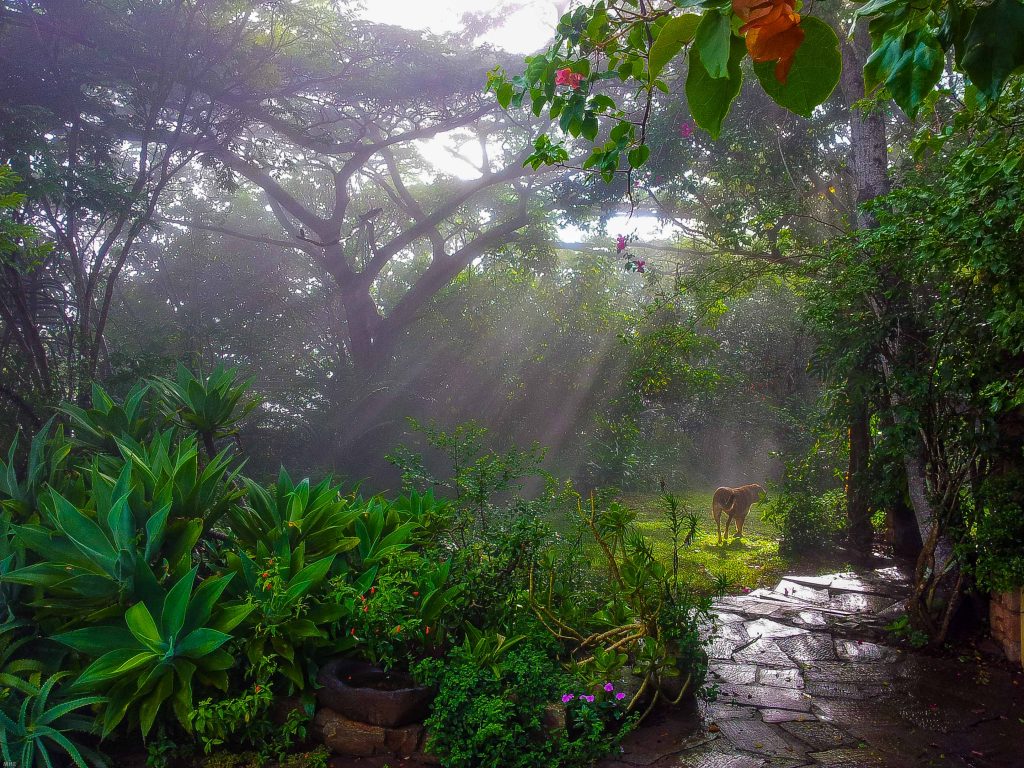
Happy memories of our dear dog Winnie on a stunning early morning in our tropical garden in Durban, South Africa.

Happy memories of our dear dog Winnie on a stunning early morning in our tropical garden in Durban, South Africa.

Summer evening nestling safely below the mountains of Morvern at loch Sunart after a day sailing amongst all this beauty.
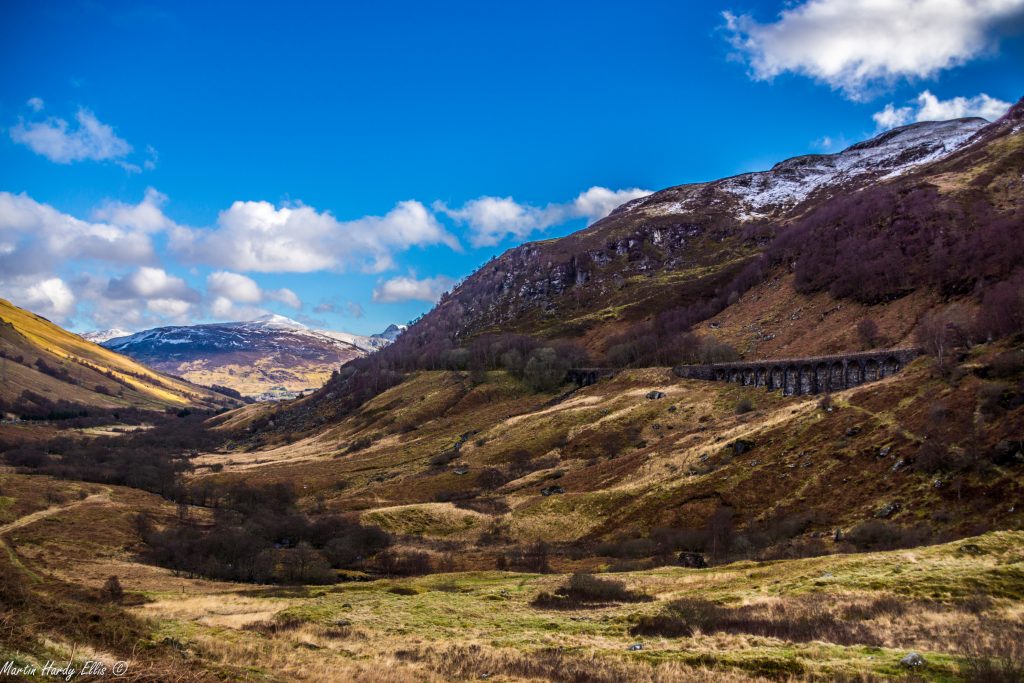
Through the mountains, to the far wild west of the highlands, runs the rail line to Mallaig, a gateway to the western isles.
As it passes through the tunnels in these wild mountains, but before it runs along the loch that lies between them, a strange and little known event occurs.
Yes, you will see the train appear again, but not its magical counterpart that veers off into the fastness of the wilderness and into the dimension of the sidhe, making its way to Hogwarts.
For this is the real Harry Potter Line.
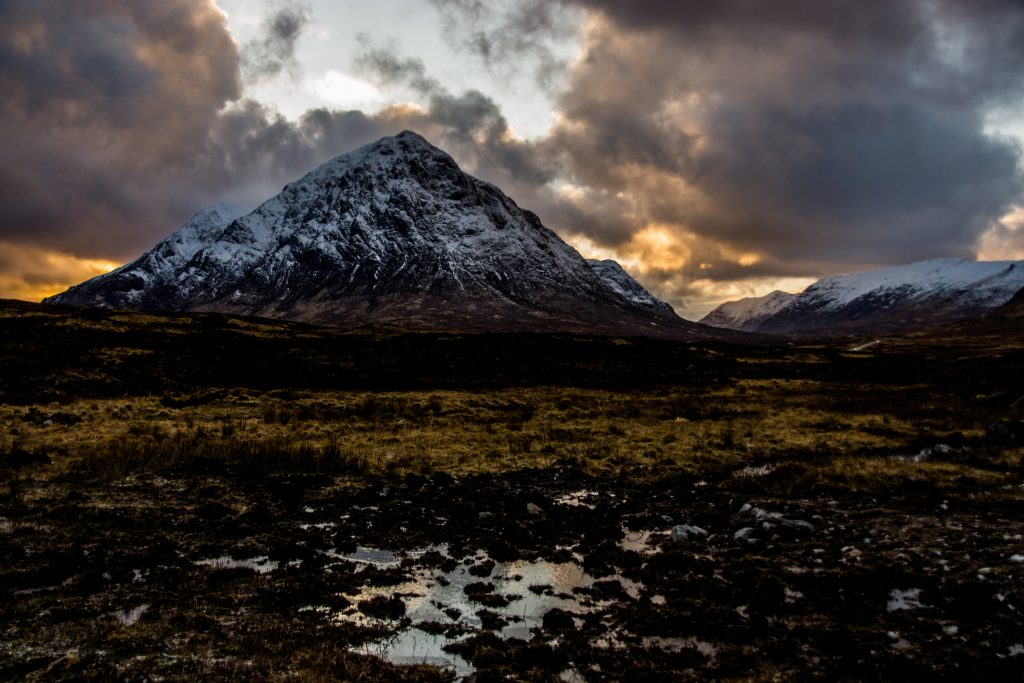
Returning home to the western highlands from Edinburgh, I crossed a windy Ranoch moor at sunset in gloomy sleet with little visibility.
But, as I reached the entrance to Glencoe, the sky opened briefly and all was transformed.
Before me a pyramid of dramatic power appeared, as if the sidhe had cast a spell allowing me just enough time to take the shot.
And then with a wave of a wand made of howling wind – All was gone!
We spent this stunning first day of winter taking unforgettable photos around where we live on the Ardnamurchan peninsula in the western highlands of Scotland.
We ended off with this golden sunset, taken from where Glenborrodale Castle looks out over loch Sunart.
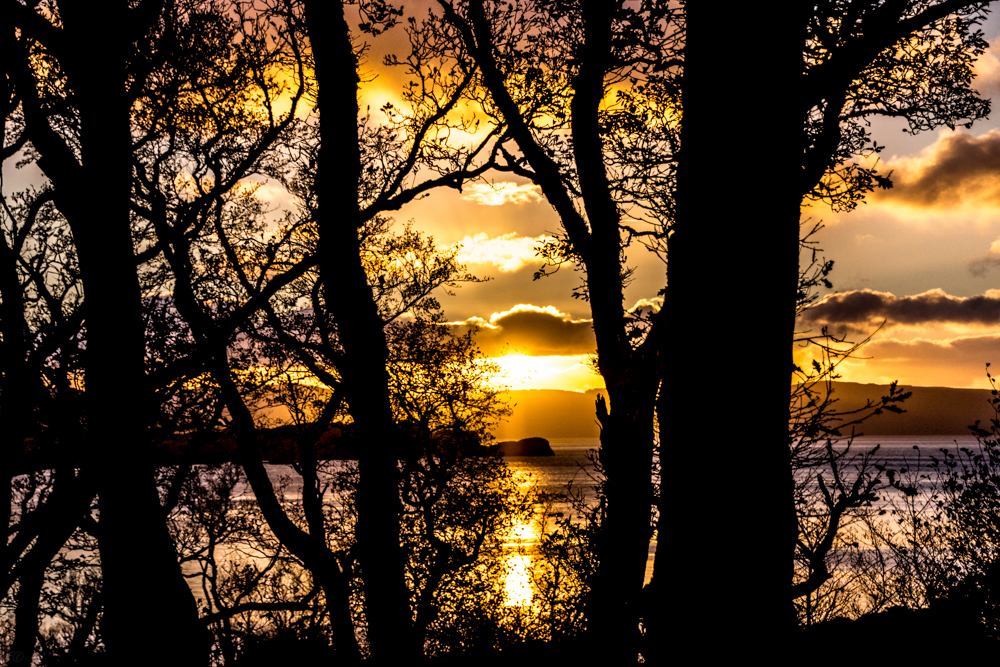
We were driving home from foraging for wild mushrooms in the ancient forest

We had to drive around Ben Hiant which is on the most westerly peninsula
of Britain in the highlands of Scotland, guarding the entrance to Loch Sunart

It was the night before the blood moon eclipse.
And then the magic moon arose over the enchanted mountain, Ben Hiant
(Gaelic for enchanted mountain)

Pure magic in a mystical magical place
My wife Susan and I were walking high up on the mountain behind our house in Ardnamurchan.
It is in the western highlands of Scotland, looking out over loch Sunart.
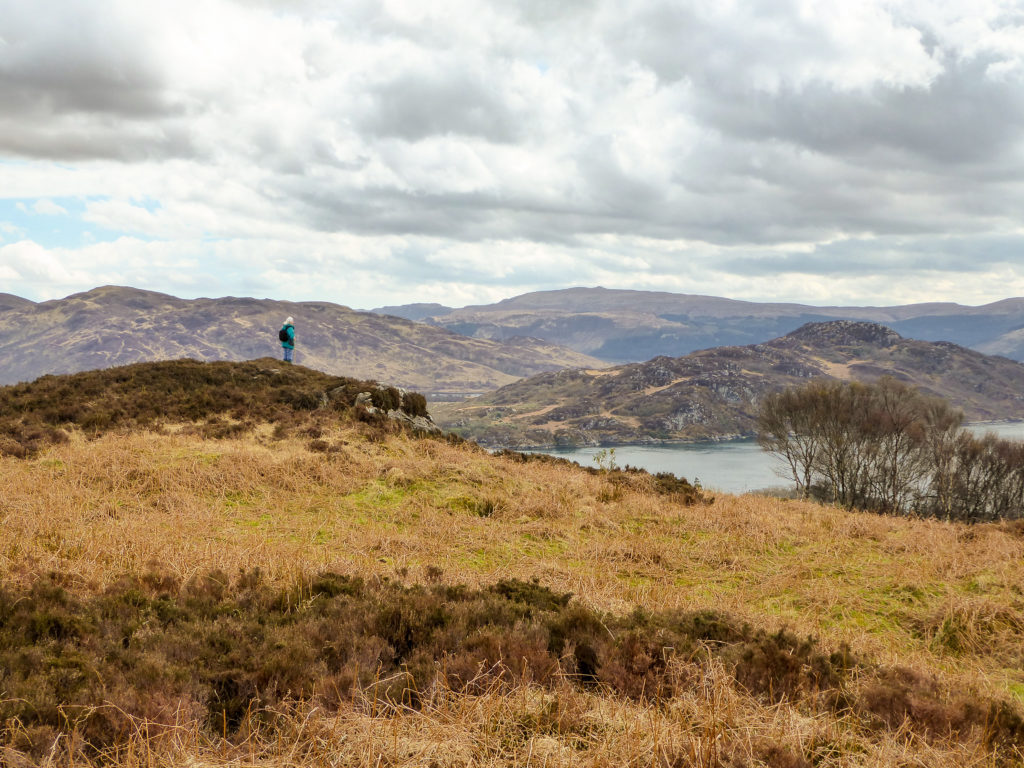
We were checking our water supply, which is from a strong stream about half way up from the top.
Nobody comes up here except for the few people who live in this remote area, so the water is pristine.
The distillery a few miles away uses water from a similar source due to its purity.
This is one of the blessings of the wild and remote western highlands.
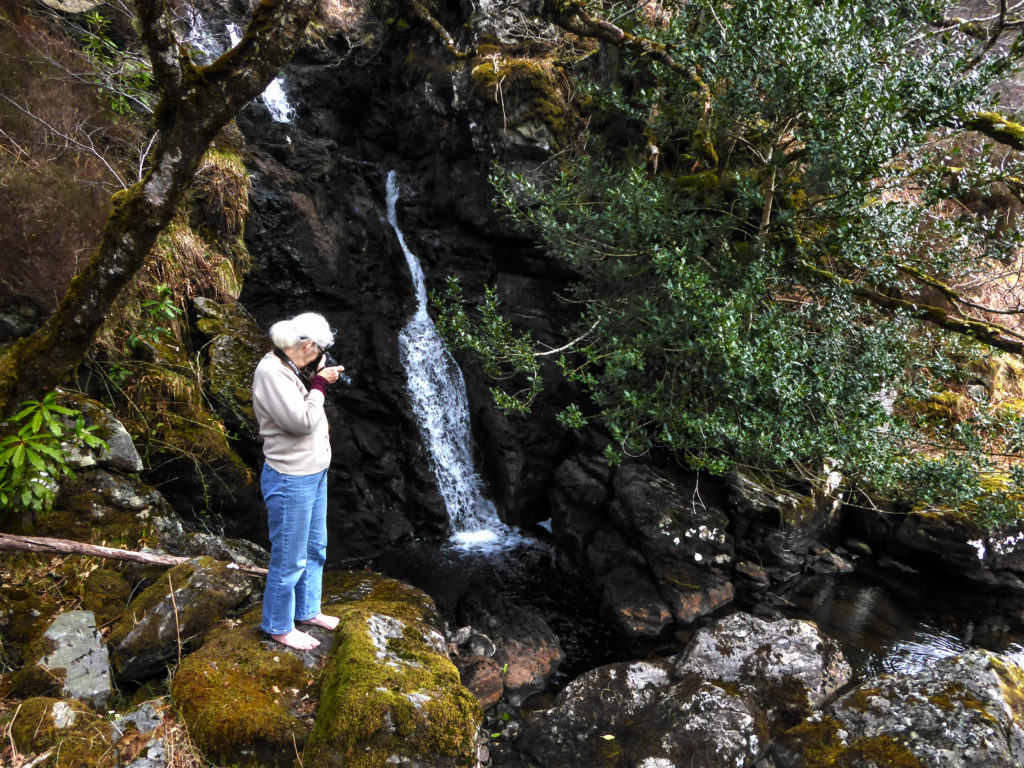
We had a very cold swim in this lovely natural pool under the waterfall a few hundred metres upstream.
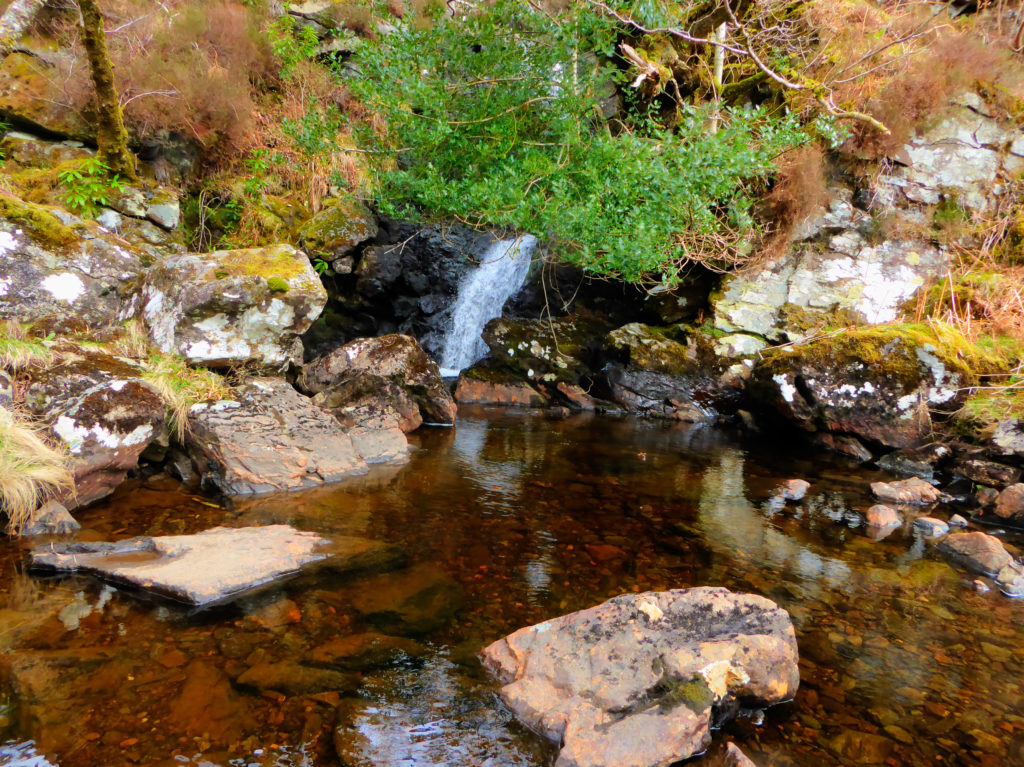
Followed by a picnic on the grass next to the pool.
Wonderful fun.
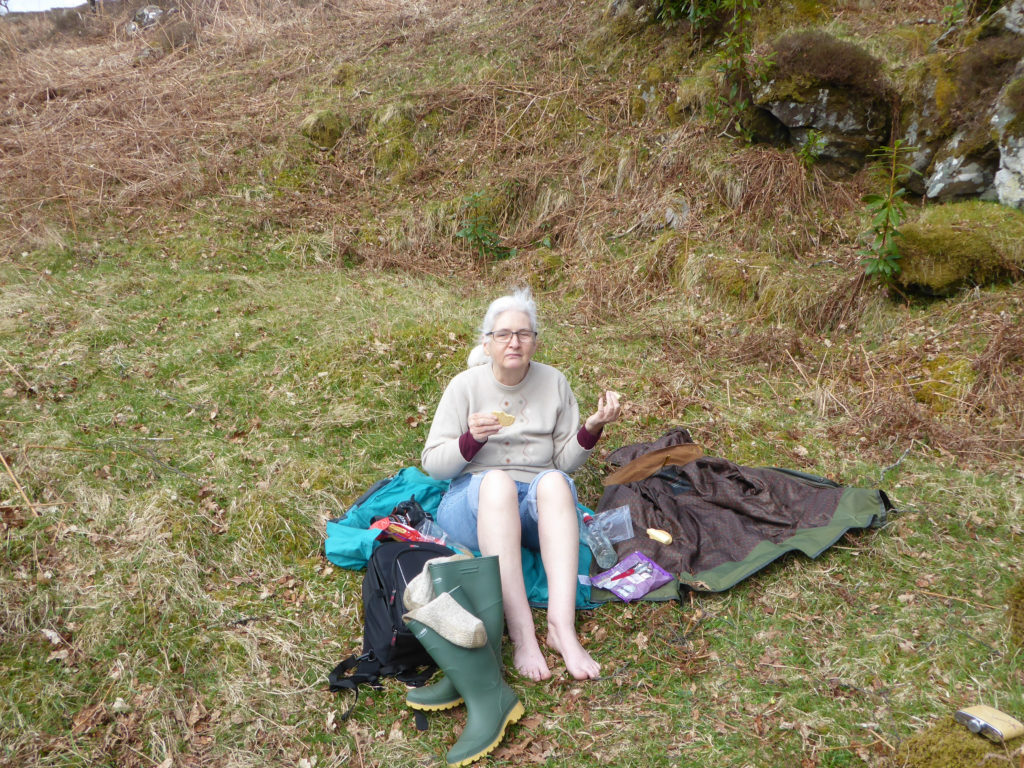
BUT, then we found tiny ticks on our legs. Thirty or so on Susan’s bare legs.
We spent many years in Africa and are no stranger to all types of ticks.
The problem is here in this seemingly peaceful place where the red deer roam, they drop ticks.
These local little devils carry Lymes desease, which is no joke and not found in Africa to my knowledge.
They have a friend, the mighty scottish midge, who attacks in great numbers like the highland warriors of old.
So between them they keep us humans at bay and protect their mountains.

However it is all worth it.
Living here is magical, so we have come to terms with the wild.
Loch Linnhe is the starting point of the great glen in Western Scotland which ends at loch Ness and Inverness.
Loch Linnhe runs inland for miles from the open Atlantic ocean, past the isle of Mull and on to Fort Willam at the foot of Ben Nevis, the highest mountain in Britain.
On route and opposite the isle of Mull is the wild and virtually uninhabited land of Morvern and its mysterious mountains.
You can only explore them on foot, but it is a serious undertaking and only for the true explorer.
The western highlands of Scotland are magnificent and truly photogenic.


How did you go bankrupt?
Two ways. Gradually but then suddenly’.
These two lines, which appear in the Ernest Hemingway-novel ‘The Sun Also Rises’, encapsulate, for me at least, what is slowly but surely unfolding in South Africa.
We are in the ‘slowly at first’-phase of going bankrupt as a country, but at a later stage, not too far away, will we reach the ‘suddenly’ part of running out of cash. Some would say we’ve already reached that point.
The #FeesMustFall student unrest we witnessed last week at most of our campuses, Parliament and even at the Union Buildings, are seemingly unrelated symptoms of a much greater build-up of steam boiling under the surface. These sporadic and isolated incidents include the labour uprising and massacre at Marikana in 2012, the ongoing e-tolls boycott and several hundred incidents of social unrest around water, electricity and the provision of basic services.
But related they are and there is more to come.
For me they represent small but ever-growing fissures in the ground under our feet that are opening up as the financial pressures – brought about by years of economic mismanagement, corruption, lack of governance and government arrogance, to name just a few – build up steam.
What the end of the commodity cycle means
These pressures were still manageable when the commodity prices were in full bloom and the economy was growing at around 5%, prior to the Great Financial Crisis. Government revenue was pouring in, creating the illusion of a cash-flow that forever rises into the future. Ah, such bliss….
Those days now seem so far away. The commodity cycle peaked in about October 2011; less than a year later the first to feel the squeeze were the mine workers at the platinum mines who went on strike demanding an adjustment to their basic wages. They were met with a hail of bullets leaving 37 dead.
The e-toll saga in Gauteng is nothing else but a manifestation of middle-class anger directed at the financial squeeze they find themselves in. By itself e-tolls are not a substantial cost, but when taken into consideration with above-average increases in land taxes, medical aid fees, school fees, electricity and everything else, it becomes the proverbial last straw on the camel’s back. With e-tolls you have a choice to pay or not pay; that therefore became the weakest fissure and out burst the steam.
If government does not realise this and continues on its misguided current path, the pressures are bound to build up to a bursting point of volcanic proportions.
It also is a manifestation of the utter powerlessness experienced by middle-class voters who are being squeezed by rising taxes, levies, fees, medical aid contributions, cost of living and a host of other factors. There is a rage building up under normally placid and law-abiding taxpayers.
Mugged by a blue light gang
Let me give you a small example of what I’m talking about. I’m certain many will relate to this.
The other day, in rush-hour traffic near Sandton on the M1 North going to Pretoria, I sat in bumper-to-bumper traffic, when behind me one of our modern-day curses under the ANC government loomed large in my rear-view mirror: a blue light convoy, accompanied by about five JMPD vehicles.
Everyone was threatened, cajoled, sworn at and pushed aside as the convey came screaming past, sirens blaring. Woe betide anyone who did not react fast enough in the eyes of the gun-toting JMPD-traffic cops, so that the big and very important man/woman of ANC could come through. I watched with horror as the procession continued in the direction of Pretoria.
It left me breathless with an impotent rage and yet we as taxpaying citizens can do absolutely nothing about it. I looked at the faces of the motorists around me, black and white, and the same rage was clearly visible.
It may be an insignificant incident in the greater scheme of things, but this is the way an increasing number of middle-class taxpayers in the private sector are starting to feel about the government. For it is they who are feeling the economic pinch the hardest.
Government workers now the rich and privileged
Middle-class taxpayers in government have been earning salary increases at a rate of inflation plus 3% for many year now and have been promised increases of the same for the next three years. A cushy job in government is now the surest way to middle-class wealth for most South Africans. Much of that is the consequence of cadre deployment, among other things. Merit seemingly counts for very little in the greater scheme of things. Such is the power of the civil service that National Treasury had to allocate money from its contingency reserves – emergency money in other words – to satisfy the demands of government workers.
Middle-class taxpayers are not, generally, beating inflation with their salary increases. This can already be seen in new motor car sales, home sizes, travel and even medical aid membership – they are all shrinking. Middle class SA is under a tremendous amount of pressure. Over the weekend the Lever Institute at the University of Cape Town confirmed this trend.
As it is, according to economist Mike Schüssler, the average salary in government is now R241 000 per annum versus R196 000 per annum in the private sector. The bloated government salary bill lies at the heart of much of our financial problems at the moment. And what are we getting in exchange? Surly, sloppy service with attitude and if you can’t do your job, you employ a consultant.
There was a time that a government employee would accept a lesser salary (relative to the private sector), in exchange for job security, medical aid, housing allowance and a generous pension fund. It was in the private sector where you would make the big bucks but where you could also lose your job and/or business if things went pear-shaped.
In the current financial year SA will spend R550 billion on the salaries of all civil servants from local to national government, more than half of the four major taxes central government receives, namely VAT, personal income tax, company tax and fuel taxes.
People often ask me what a fiscal cliff is. Just open your eyes and observe. We are busy storming at one right now. A fiscal cliff is when your expenses keep on rising but your income suddenly drops away, leaving you with a massive debt to service.
The mystery of the 36 000 ghost workers
Our media is barely scratching the surface when it comes to the thievery and gross incompetence at local government level. All the North West municipalities, for instance, are under administration. It has become so common that reports of theft and maladministration do not even receive a mention anymore.
Last month trade union Solidarity released a report on the ‘ghost workers’ of the North West province, highlighting that at least 36 000 ghost employees have been drawing a combined amount of R19 billion in salaries in this province alone. R19 billion! This report received barely a mention in the media and one battles to find any discussion on it.
I feel like shouting: There’s the money for #FeesMustFall!
The education fee shortfall shouldn’t cost anyone a thing. Just stop the thieving and corruption and you have all the money for anyone who qualifies to go to university.
But in the end government will find someone else to blame: the private sector, the ‘privileged’ whites, the colonialists or the foreigners.
Government spending will be higher next year; so too the budget deficit, the wage bill as well as interest payments on government debt.
And all the time those pesky foreigners, the foreign debt ratings agencies, are waiting and watching.
Ratings agencies… such a western thing.
Magnus Heystek | 28 October 2015 00:01
By Colin Freeman, Abuja
9:20PM BST 10 May 2015
With their roots in South Africa apartheid-era security forces, they do not fit the standard image of an army of liberation. But after just three months on the ground, a squad of grizzled, ageing white mercenaries have helped to end Boko Haram’s six-long year reign of terror in northern Nigeria.
Run by Colonel Eeben Barlow, a former commander in the South African Defence Force, the group of bush warfare experts were recruited in top secrecy in January to train an elite strike group within Nigeria’s disorganised, demoralised army.
Some of the guns-for-hire cut their teeth in South Africa’s border wars 30 years ago. But their formidable fighting skills – backed by their own helicopter pilots flying combat missions – have proved decisive in helping the military turn around its campaign against Boko Haram in its north-eastern strongholds.
The Islamists have now fled many of the towns they once controlled, leading to the freeing of hundreds of girls and women last week who were used by Boko Haram as slaves and bush wives.
The role of Col Barlow’s firm in turning around one of the most vicious African insurgencies of modern times has been kept largely quiet by Nigeria’s outgoing president, Goodluck Jonathan, who lost elections six weeks ago to ex-general Muhammadu Buhari.
But last week, Col Barlow discussed his company’s role in a seminar at the Royal Danish Defence College, and in a separate interview with a Sofrep.com, a special forces website, he described in detail the “aggressive” strike force that was created to push Boko Haram onto the back foot.
“The campaign gathered good momentum and wrested much of the initiative from the enemy,” said Col Barlow, 62. “It was not uncommon for the strike force to be met by thousands of cheering locals once the enemy had been driven from an area.”
He added: “Yes, many of us are no longer 20-year-olds. But with our age has come a knowledge of conflicts and wars in Africa that our younger generation employees have yet to learn, and a steady hand when things get rough.”
During apartheid, Col Barlow served with the South African Defence Force, a mainly white military unit that defended the regime against insurrection and fought border wars in neighbouring Angola and what is now Namibia.
In 1989, as apartheid was beginning to crumble, he co-founded Executive Outcomes, a private military company made up of many ex-members of South Africa’s security forces. One of the first modern “private armies”, in 1995 it successfully helped the government of Sierra Leone defend itself against the rebels of the Revolutionary United Front, notorious for chopping off the arms of their enemies.
Another co-founder of Executive Outcomes, which dissolved in 2000, wasSimon Mann, the Old Etonian later jailed in Equatorial Guinea over his attempts to plot a coup there.
Col Barlow’s new company is known as STTEP, which stands for Specialized Tasks, Training, Equipment and Protection. It is thought to have sent around 100 men to Nigeria, including black troopers who previously served in elite South African units. Others even fought as communist guerrillas against the South African Defence Force.
It is not known how much the Nigerian military has paid for STTEP’s services. But the fact that the Nigerian government felt it necessary to bring them in raises questions about the level of help that it was receiving from the British and US militaries, who offered mentoring packages in the wake of Boko Haram’s kidnapping last year of more than 200 schoolgirls from the north-eastern town of Chibok.
Describing Boko Haram as “a bunch of armed thugs who have used religion as the glue to hold their followers”, Col Barlow said the initial plan was for his men to train up a team to help free the schoolgirls. However, as Boko Haram continued to run amok across northern Nigeria, massacring hundreds at a time in village raids, the plan turned to schooling Nigeria’s largely traditional army in “unconventional mobile warfare”.
Key to this was a tactic known as “relentless pursuit”, which involved mimicking Boko Haram’s hit-and-run tactics with non-stop assaults. Once the insurgents were on the run and their likely route established, members of the strike force would be helicoptered into land ahead of them to cut off their likely escape routes, gradually exhausting them.
The South Africans even used bush trackers to work out where their enemies were going, an old-fashioned art that proved vital in Boko Haram’s forest hideouts. “Good trackers can tell the age of a track as well as indicate if the enemy is carrying heavy loads, the types of weapons he has, if the enemy is moving hurriedly, what he is eating, and so forth,” said Col Barlow.
While the Nigerian government has insisted the South Africans’ role was mainly as “technical advisers”, Col Barlow suggested his men had been involved in direct combat. His air power unit was “given ‘kill blocks’ to the front and flanks of the strike force and could conduct missions in those areas,” he said. His forces also helped with intelligence gathering, troop transportation and evacuation of casualties.
Mr Jonathan’s decision to hire STTEP came just ahead of March’s elections, when his government’s failure to either tackle Boko Haram or free the kidnapped Chibok schoolgirls was a major issue. He has promised that when Mr Buhari takes over at the end of this month, Boko Haram will be a spent force, although it is not yet clear whether the Buhari government will renew STTEP’s contract.
Col Barlow warned that while the Nigerians had done well within three months that he had been contracted to mentor them, “the enemy was able to flee the battlefield with some of their forces intact, and will no doubt regroup and continue their acts of terror.”
The involvement of STTEP in Nigeria will inevitably reignite the debate over whether private military companies should be used in conflicts. Human rights groups question whether they are publicly accountable, and in South Africa especially, their background in the apartheid-era makes some uneasy.
However, Col Barlow, whose firm has a code of conduct for behaving “in a legal, moral, and ethical manner” said that private companies were often better than UN or Western trainers of African armies. The latter were often hamstrung by political baggage and a failure to understand how either African armies or their enemies worked, he said. The advisers that Britain and America have sent to Nigeria are also not permitted to take part in operations on the ground, partly because of the Nigerian’s army’s poor human rights record.
Noting that even the US military appeared to regard his firm with distrust, Col Barlow added: “Some like to refer to us as ‘racists’ or ‘apartheid soldiers’ with little knowledge of our organisation. We are primarily white, black, and brown Africans who reside on this continent and are accepted as such by African governments.”
I want to share one of the most interesting short videos I’ve seen in a while, originally posted by Yonatan Zunger.
Check it out on Amazon – Wolf Totem
The direct effects of the wolves were small: the wolves eat a few deer, but apart from that mostly keep to themselves. But the indirect effects were huge.
It started because the deer, who had been running roughshod over the entire park, quickly figured out that places like valleys were not good places to be a deer when there are wolves about. This led to trees being able to grow in those areas for the first time in decades.
The effects of that are complex and profound, and I encourage you to watch the video, because I can’t possibly summarize it better than it does. Everything from the animals to the plants to the very physical geography of the rivers was changed.
The key lesson of this is that ecosystems are connected. You can’t make a single change to one and expect it not to have consequences, including very far-reaching ones of a sort you couldn’t ever have predicted. This is a general property of all large, strongly-interacting systems, including societies, and it’s worth keeping in mind whenever things change.
I would like to recommend a wonderful book to you which really explains the positive role of wolves on the grass lands of Mongolia. It is called “Wolf Totem” by Jiang Rong, who writes of his years living in Mongolia and what he learned from the Nomads about wolves.
Check it out on Amazon – Wolf Totem